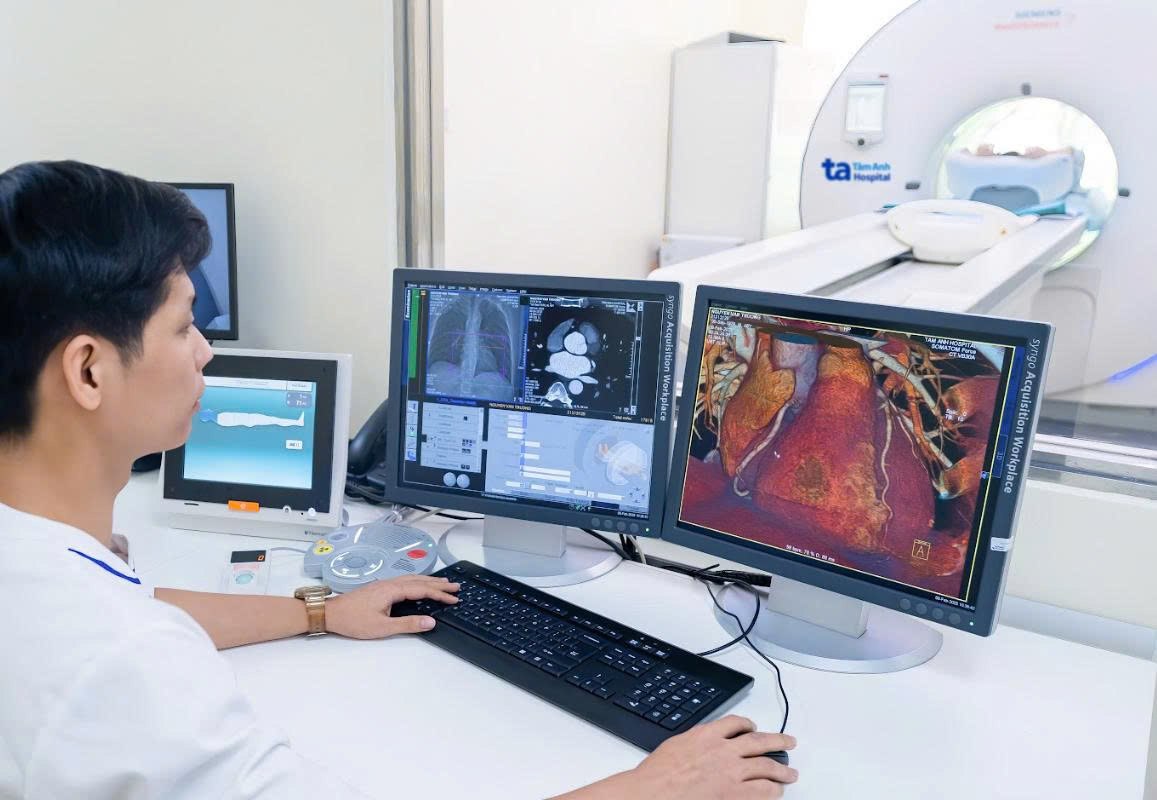Answer:
A cardiac computed tomography (CT) scan, or coronary CT angiography, is a minimally invasive imaging technique that can detect early signs of a heart attack before a serious event occurs. This technique allows doctors to observe the structure of the heart's blood vessels in detail, thereby detecting narrowing, blockages, or calcification of the coronary arteries. Especially in the pre-symptomatic stage (when patients experience only fleeting chest tightness, fatigue during exertion, or unexplained palpitations), a cardiac CT scan can screen, assess the risk, and predict the likelihood of a future heart attack.
Depending on the objective, doctors prescribe different scanning techniques. For patients with suspected symptoms or high-risk factors, a contrast-enhanced coronary CT angiography is a suitable choice for detailed examination of the vessel lumen, the degree of stenosis, and related structural abnormalities.
Given your underlying diabetes and suspicious symptoms, you should have a medical check-up at a medical facility with a cardiology department. Doctors may order a cardiac CT scan for people with underlying heart conditions or at high risk of heart disease such as obesity and diabetes. Young people who smoke, have high blood pressure, lipid disorders, or are inactive should also be screened.
Previously, coronary CT angiography often required patients to have a stable, low heart rate to avoid image blurring. Now, the Revolution Apex Elite 1975-slice CT system uses next-generation CT scanning technology, along with AI-powered software, to support fast and accurate coronary angiography. The Somatom Force VB30 CT scanner, with over 100,000 slices, scans the entire body in 1-2 seconds, minimizing radiation exposure during the scan and capturing sharp images even when the heart rate is fast or irregular.
 |
The Somatom Force VB30 CT scanner can detect early stages of coronary artery stenosis due to atherosclerosis and assess the risk of a heart attack. Photo: Tam Anh General Hospital |
The Somatom Force VB30 CT scanner can detect early stages of coronary artery stenosis due to atherosclerosis and assess the risk of a heart attack. Photo: Tam Anh General Hospital
These two CT scanning systems assist doctors in early detection of lesions just a few millimeters in size within the body, including the heart, brain, organs, head, neck, chest, abdomen, and pelvis. This allows clinicians to make quick, accurate diagnoses and determine appropriate treatment plans.
MSc. MD. Specialist Level II Chau Thi Ngoc Anh
Deputy Director of the Center for Diagnostic Imaging and Interventional Radiology
Tam Anh General Hospital, TP HCM
| Readers can submit questions about heart disease here for doctors to answer. |












